Ask anyone on the Mauritian shore what their favorite beach on the island is, and chances are they’ll reply “you’re standing on it.” And that’s totally understandable. It’s not easy to choose among the fabulous Mauritius beaches when each coast boasts bright turquoise water and long sandy stretches that have earned the island accolades as a top honeymoon spot from publications like Brides Magazine.
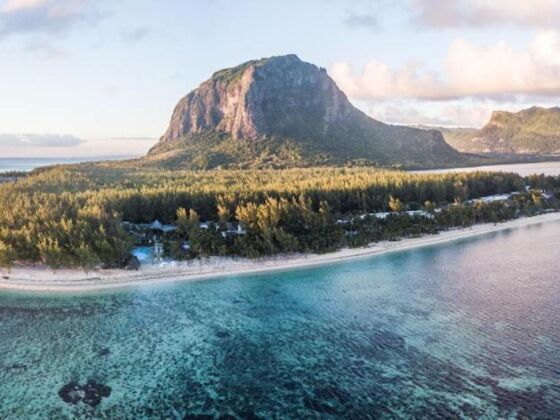

These Gorgeous Mauritius Beaches Will Make You Forget About the Extra-Long Flight
Why go to Mauritius vs. Maldives or Seychelles?

Photo: My Mauritius Travel
Beyond its beguiling beaches sprinkled with black lava rocks, Mauritius has a lot more for independent travelers than other contenders in the Indian Ocean like Seychelles and Maldives. And those extra attractions make it worth the extra effort to get there.
While going to Mauritius probably won’t add any extra flights for travelers from the US, it will add extra flight time. It’s a four-hour flight from Johannesburg, South Africa; six from Mumbai, India; nearly seven from Dubai, United Arab Emirates; and at least 11 hours from cities in Europe like Madrid, Paris, and London (though they’re all direct flights).
So why go the extra mile? Many people go to Mauritius for its remarkable cultural landscape – something that caught writer Mark Twain’s attention in 1896. Having nearly completed his circumnavigation of the globe along the equator, he wrote: “Went ashore … at Port Louis, a little town, but with the largest variety of nationalities and complexions we have encountered yet.” (By the way: he also head Heaven must have been copied after Mauritius.)
More than a century after his writing, people from different ethnic groups (Indo-Mauritians, Mauritian Creoles, Sino-Mauritians, Franco-Mauritians) and religions (Hinduism, Islam, Buddhism, Christianity) still co-exist on the island, creating a welcoming and tourist-friendly culture.
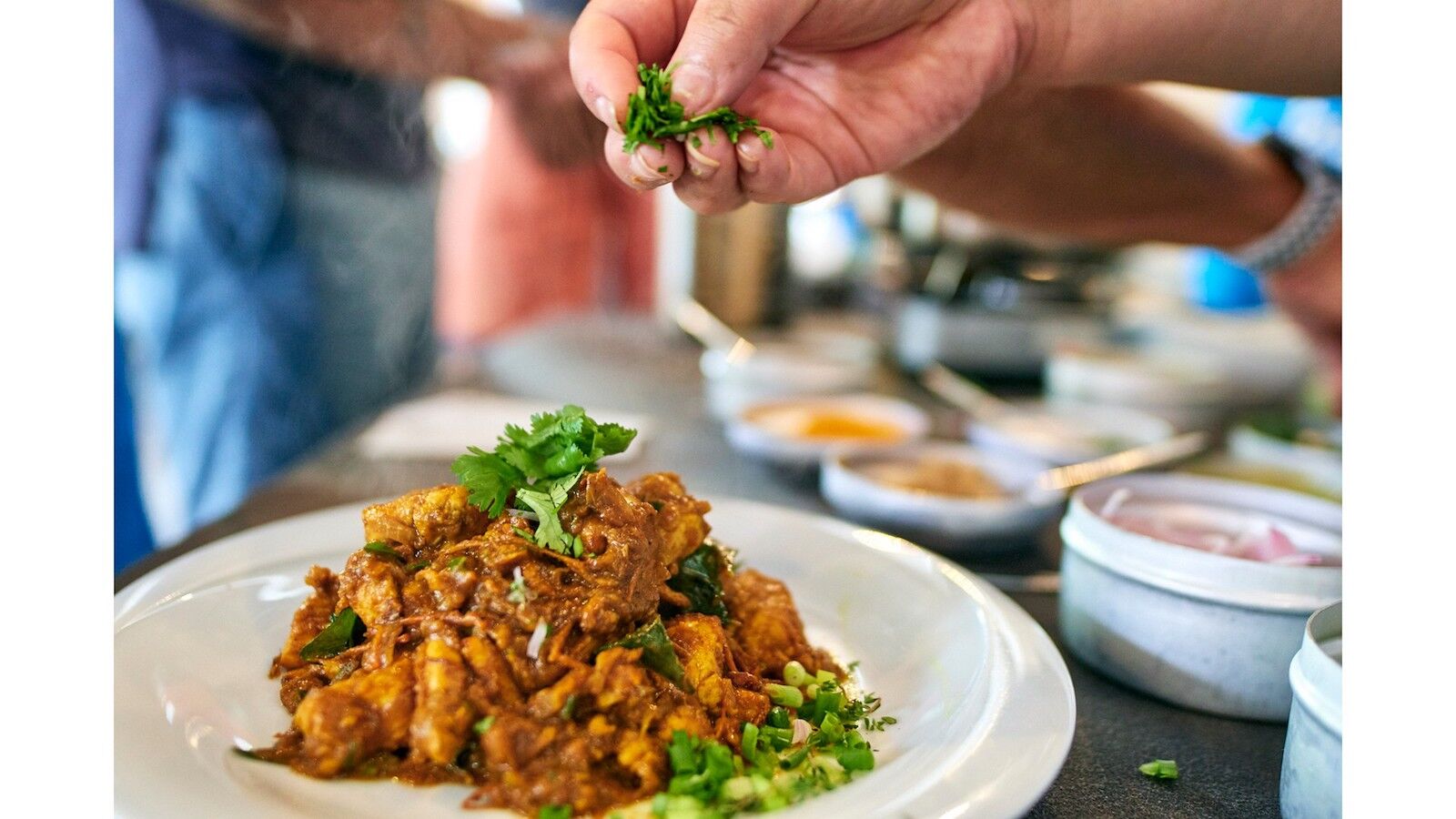
Photo: My Mauritius Travel
The country’s restaurants also reflect that same multiculturalism and Mauritian cuisine meshes French, Chinese, Indian, and African influences. In practice, this means that you can have perfectly flaky French croissants, Asian-inspired bol renversé, and Mauritian biryani all in one day. And gateaux piments (chili cakes) are a great snack any time of day.
Finally, of course, there are the Mauritius beaches, the stunning natural landscapes, and the healthy reefs of the underwater world. You can hike to waterfalls and volcanic landscapes, scuba dive and snorkel on colorful reefs, spot dolphins on a catamaran tour, or take a day trip to one of many remote Mauritius beaches.
But if you can’t afford a private day tour to a beach (though they may cost less than you think), don’t worry. The top Mauritius beaches on each coast are accessible and open to the public. And considering how few tourists make the extra effort to reach the country, you may find you have the whole beach almost to yourself, anyway. And these are the best.
We hope you love the spaces and stays recommended below. Just so you know, Matador may collect a small commission from the links on this page if you decide to book a stay. We never let hotels pay to influence our recommendations.
Best eastern coast beach: Belle Mare
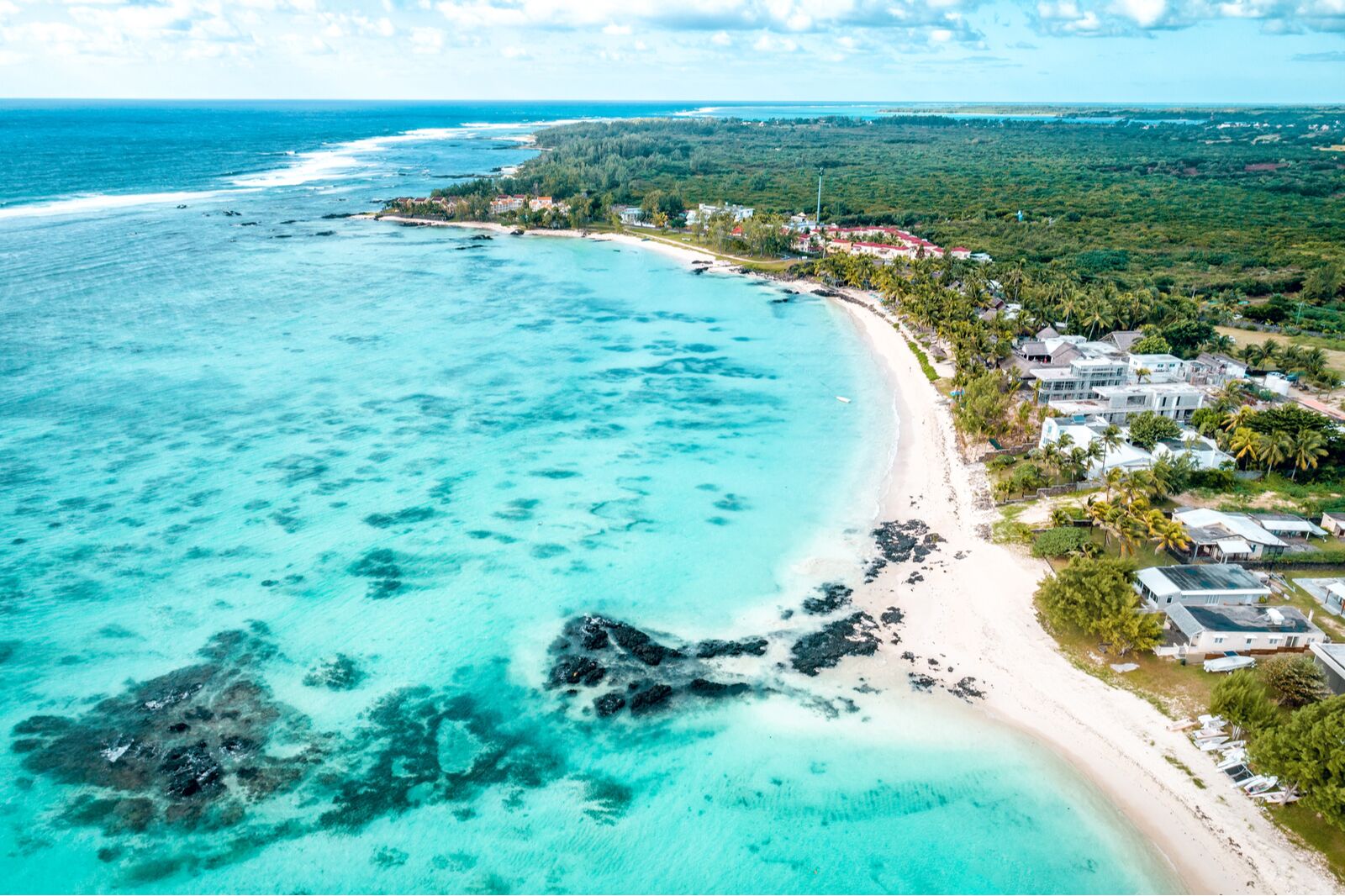
Photo: Ajan Alen/Shutterstock
This is the island’s longest beach and has a beautiful sea, as the name belies to French speakers. But to describe the ocean just as “beautiful” is truly an understatement.
It’s shimmery, warm, and has more fish than you’ve likely ever seen while snorkeling off the shore. And as the icing on the cake, there’s a breezy park lined with native Casuarina trees next to the beach. It would be the perfect place for a picnic in the shade, especially if you had the foresight to pick up a bottle or two of duty-free wine at the airport.
The eastern Mauritius beaches and towns are still relatively uncrowded, but in the Belle Mare area, you’ll find a row of beachfront resorts and villas. Constance Prince Maurice is a five-star hotel on the beach, and if you go inland a bit, you’ll find the much more affordable 15-bedroom Horisun, which distinguishes itself with an indoor/outdoor sunken tub in all rooms. There are a couple of no-frills restaurants nearby, and it’s a short walk to the beach and the nearby lagoon (ideal for snorkeling).
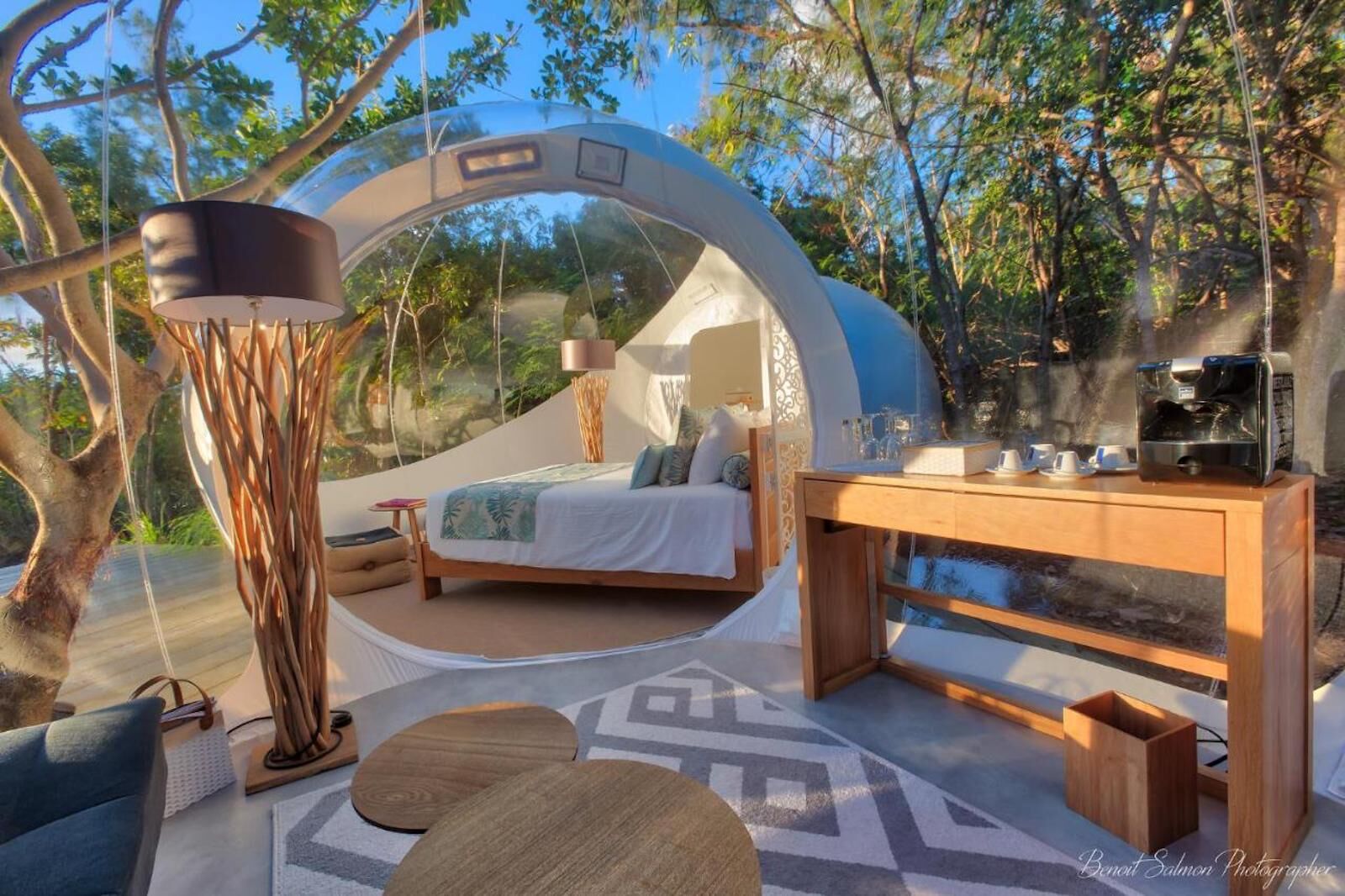
Photo: Booking.com/Bubble Lodge
Another great place to snorkel on the eastern shore are the Blue Bay Lagoon and Île aux Cerfs (Deer Island, though there are no deer these days). It’s a 15-minute speedboat ride from the Pointe Maurice Jetty; boats leave every 30 minutes. You’ll have your choice of water sports on the island, but the only lodging option is the eco-friendly Bubble Lodge. Fortunately, it’s pretty darn awesome. Who doesn’t want to sleep under the stars?
Best northern coast beach: Mont Choisy
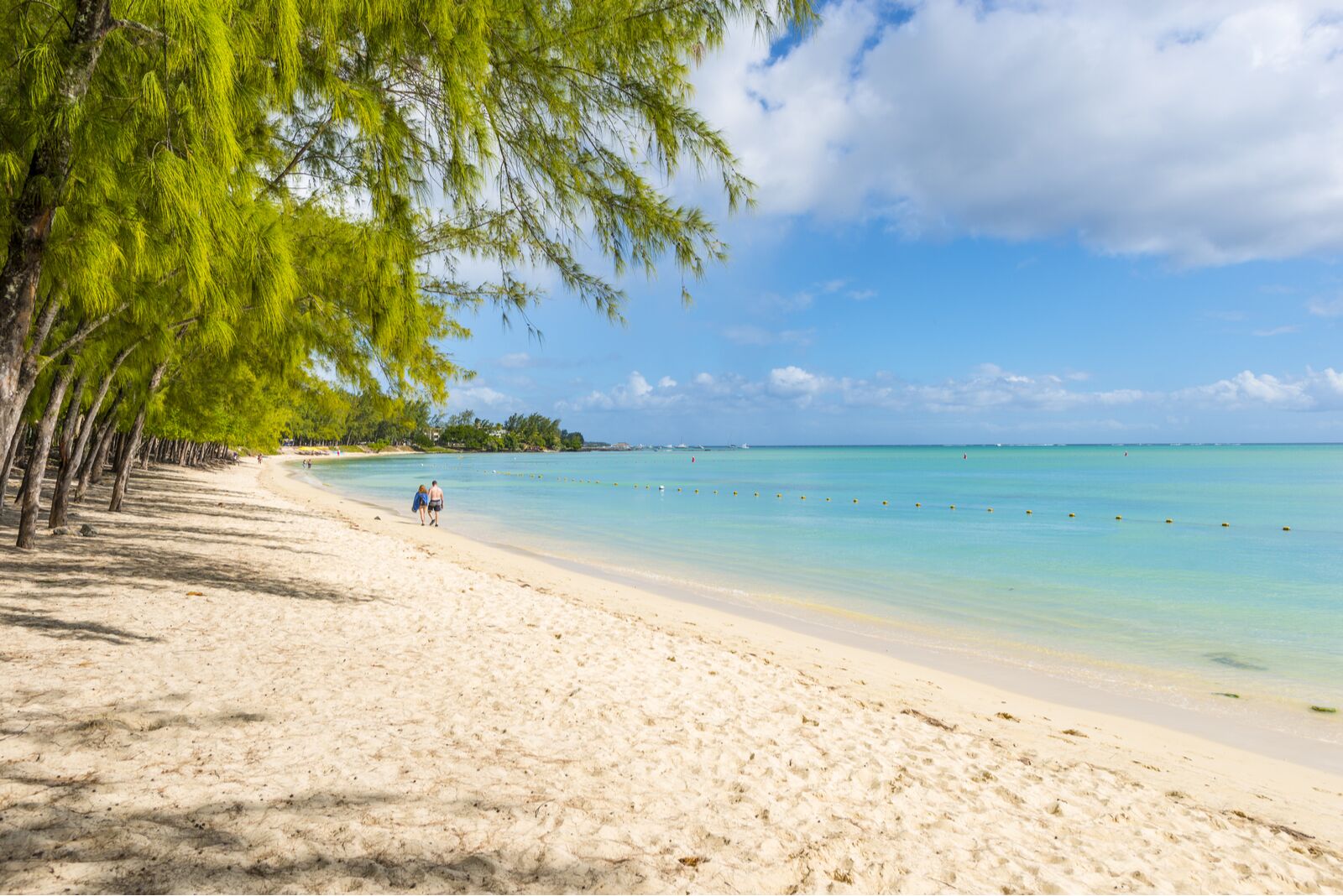
Photo: Quality Master/Shutterstock
Next is the north. Forget chaotic Grand Baie and head instead to chic Pointe aux Canonniers, where you can soak up the sun at Mont Choisy Beach. It’s one of the wider Mauritius beaches, with sugar-fine, soft sand. And the always-calm water is perfect for swimming.
The exclusive and luxurious – but also quite pricey – 20 Degrées Sud is around Pointe aux Canonniers, but so are more affordable boutique hotels with chill-out remixes on repeat, like Esprit Libre.
The best scuba diving in the country is in the north, which explains the high concentration of dive shops in the area. You can dive year-round on the island, but not all sites are always accessible or visible. However, the northern reefs offer the closest thing to optimal year-round conditions in terms of both accessibility and visibility. Whether you’re a curious beginner or an open water certified diver, coral-encrusted wrecks, Gorgonian sea fans, multicolored tropical fish, and rare macro life await under the surface. Some of the most famous sites are Coin de Mire Island, Round Island, and Snake Island.
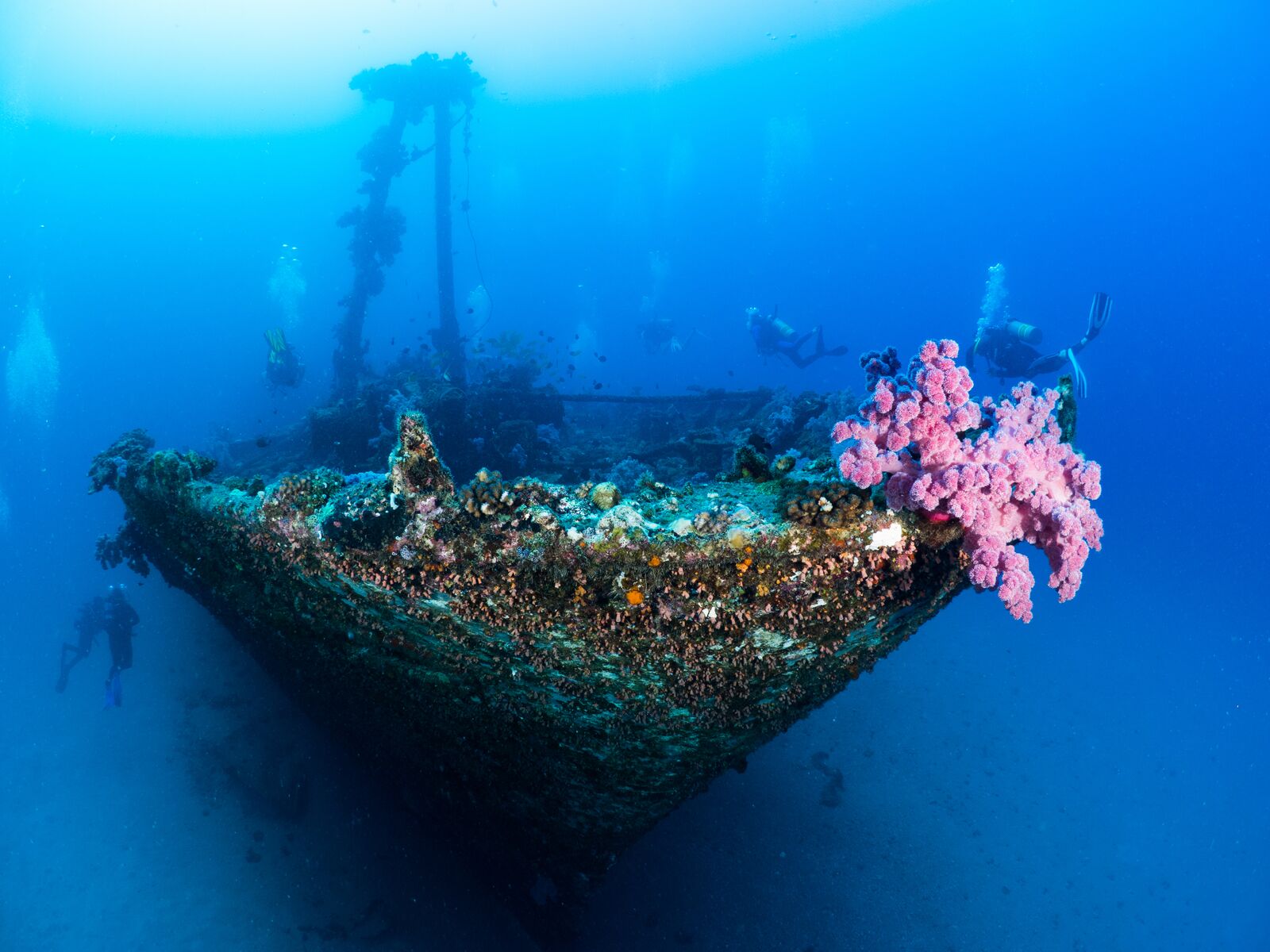
Photo: Chris van der Voet/Shutterstock
While visiting Mont Choisy, try to find some extra time to explore the northwest coast. Cap Malheureux is a pretty little beach town north of Mont Choisy, and the Balaclava-Turtle Bay marine park to the south is a fabulous bay ideal for snorkeling since it’s protected from wind. Oh, and it has tons of sea turtles. Just be sure to give them lots of space if they swim by while you’re in the water.
If you go by the capital city, Port Louis, it’s worth stopping for a few hours. The Natural History Museum has a fascinating exhibit on the dodo bird, which serves as the country’s emblem on the coat of arms. O Bistro serves exquisite French food, and CocoChill has not just a swim-up bar but tables actually in the pool.
Spoiler alert: you might notice by now that many restaurants in Mauritius have their menu handwritten on blackboards, which staff carry between tables as most menus change daily.
Best western Mauritius beach: Flic en Flac
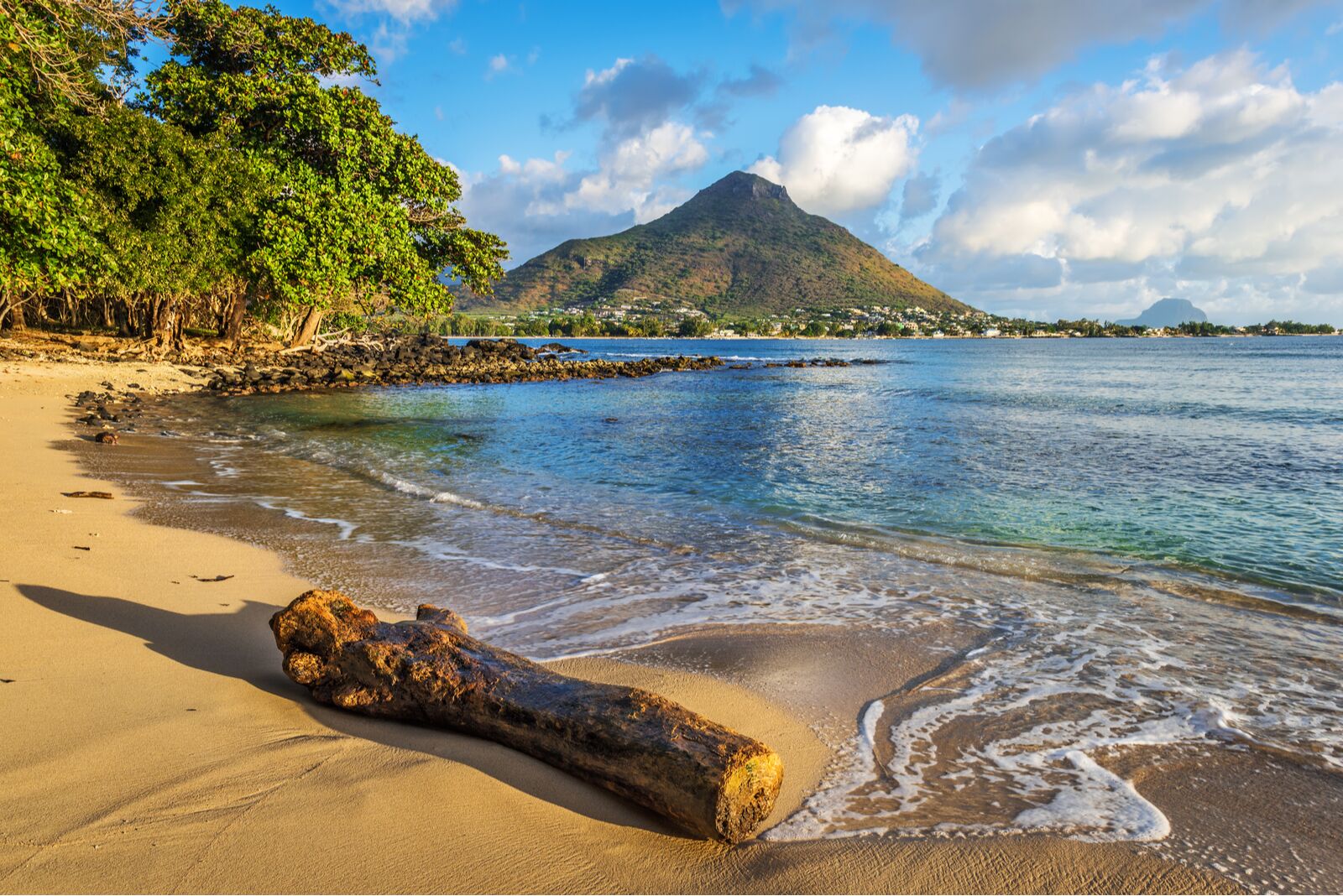
Photo: Ppictures/Shutterstock
Popular Flic en Flac and Wolmar are convenient base towns if your goal is to reach Tamarind Falls, Black River Gorges National Park, or Chamarel Seven Colored Earth Geopark – three popular sights on the western coast. That said, you’ll need to work up the willpower to drag yourself away from the stunning Flic en Flac beach, framed by volcanic mountains that gradually give way to an endless blue-greenish sea. You’ll never get tired of it.
As with most Mauritius beaches, all sorts of water activities are available at Flic en Flac: single and tandem kayaking, stand-up paddleboarding, parasailing, pedal boating, and bottom-glass boat tours. The only thing you can’t do is jet ski. It’s been banned on the island since 2016 as it can cause damage to the shallow reefs.
There are massive resort hotels around here, and if that’s your thing, La Pirogue is worth your time. Otherwise, Les 2 Canons is a more intimate option with an unforgettable sea-front infinity pool. For dinner, consider Sunset Garden, with an extensive menu and boozy cocktails, or Canne à Sucre, where a full Mauritian tasting menu is about $22.
Best southern coast beach: Le Morne

Photo: My Mauritius Travel
After admiring Le Morne’s Brabant Mountain from Flic en Flac, you’ll probably want to get closer, so how about basing yourself in the south for a few days? The Le Morne peninsula is as gorgeous as they come. Though stellar resorts with serious price tags, like LUX* Le Morne and JW Marriott Mauritius, dominate most of the shoreline, there’s a great public beach at the foot of the mountain. It’s a good option if you stay further away or visit as a day trip. Le Morne is also one of the best Mauritius beaches for kitesurfing – in fact, it’s one of the best in the world if that’s your thing. Horseback riding through the surf is also a popular activity, given the stunning backdrop.
You’ll have truly glorious views of the coast from the summit of Le Morne Brabant. It’s a UNESCO World Heritage Site because of its history: in the 1830s, it was where slaves (who, unbeknownst to them, had just been freed) gathered to escape police. It’s a symbol of the quest for freedom in the country’s colonial past. The hike to the summit is roughly two miles each way and gains about 1,600 feet. You can always stop at the plateau at the midpoint for good views, which cuts out most of the demanding parts of the climb.
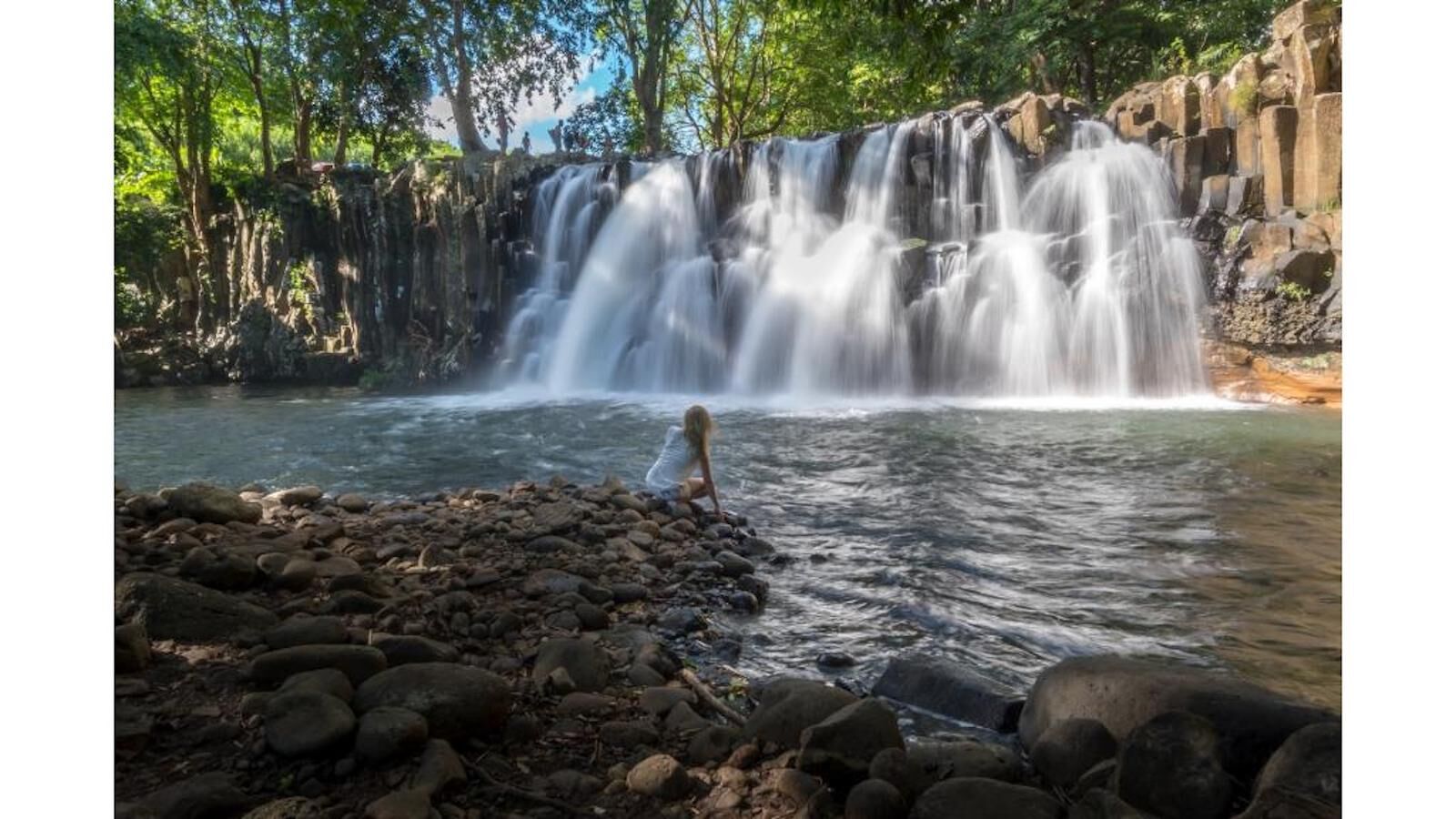
Photo: My Mauritius Travel
The rest of the southern coast is less developed, with choppier waves and swells as there’s no reef. It’s where you’ll find the Maconde sunset viewpoint; surreal Riambel Beach (where a bay meets the ocean), and Gris Gris, which is the starting point for the walk to Rochester Falls – the widest falls on the island with a swimming hole at the bottom. They’re all worth a visit before saying au revoir to Mauritius.
Getting to and around Mauritius
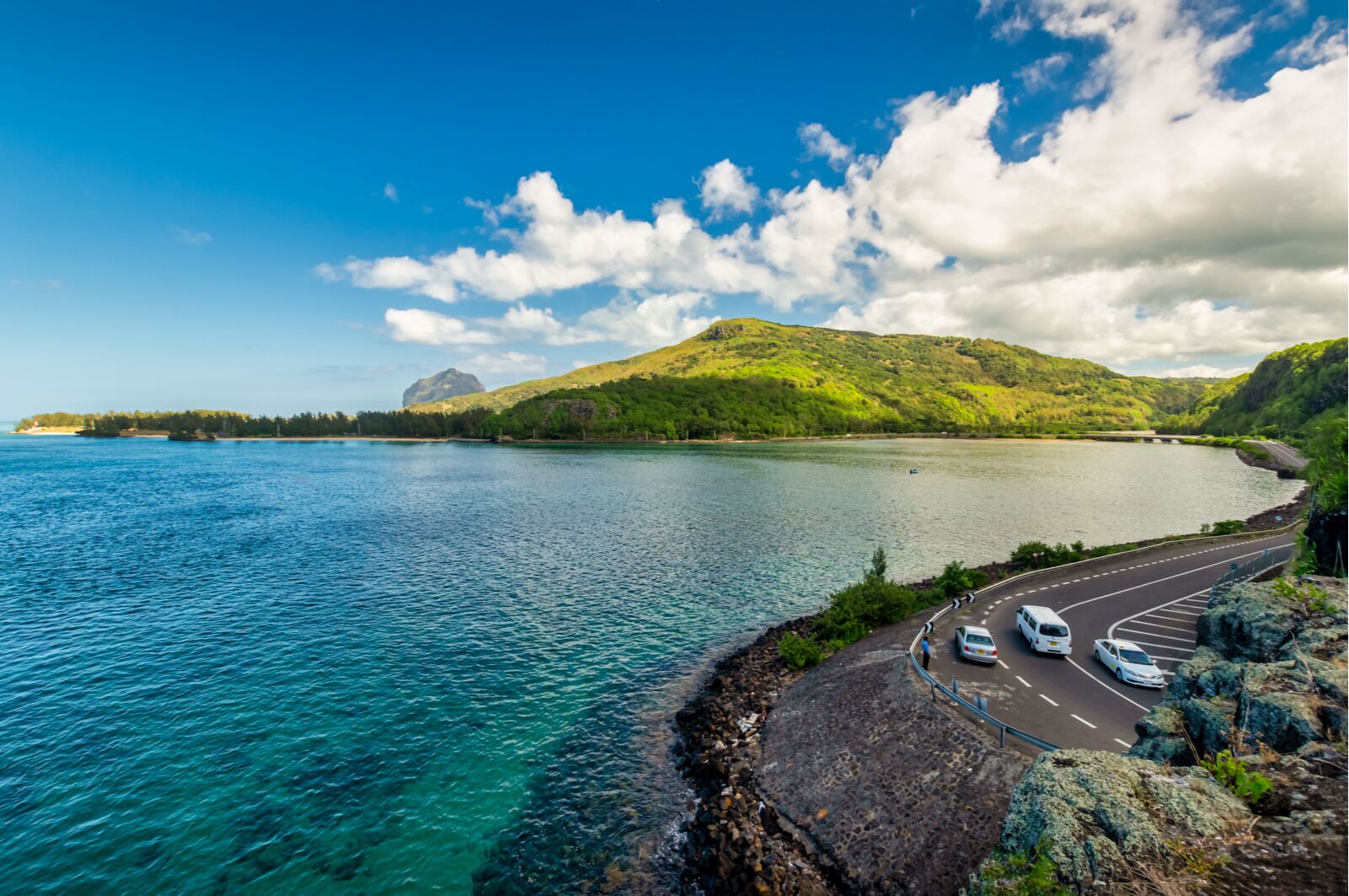
Photo: Chris van der Voet/Shutterstock
Mauritius has been open for travel since October 2021. And as of March 2022, fully vaccinated travelers don’t need to take a pre-departure COVID test (though they’ll likely be tested at the airport). The Mauritius tourism website details the specifics.
All flights come into Sir Seewoosagur Ramgoolam International Airport. Unlike in many countries, the airport’s currency exchange booth will likely give you the best rate on the island. As of this article’s publication, one dollar US equals 43 Mauritian rupees.
You can usually rent a car on the island for about $25 a day – highly recommended if you’re traveling around the coast to visit the beaches above – or rent scooters by the day or week if you’re staying primarily in one place.
Costs in Mauritius vs. Seychelles or Maldives

Photo: My Mauritius Travel
In general, Mauritius is far cheaper than Maldives, partially because you have a choice of hotels in any given spot. Maldives has a “one hotel per island” mentality, which makes for some stunning hotels but means you have only one option in most places. You also don’t have to island hop in Mauritius, which also saves money on seaplanes and ferries, not to mention time. Street food is also becoming popular, so you can stop on the side of the road while driving instead of being limited to expensive resort restaurants. And Mauritius tends to be less expensive than luxurious nearby destinations like the Seychelles, so you may find your overall Mauritius vacation to be a good deal cheaper, even if the flight costs a bit more.